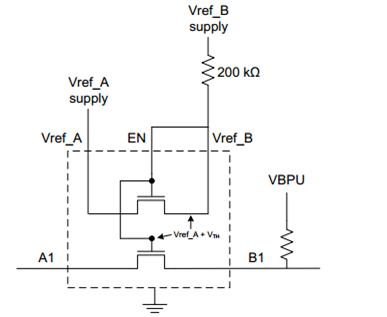Hi Team,
My customer has the question below.
According to below document, it mentions that Vref_B should be 0.8V higher than Vref_A on LSF0101.
http://www.ti.com/lit/an/slva675a/slva675a.pdf
Since most of the level translator only require Vref_B>= Vref_A, can you help me know why LSF0101 has such special requirement?
Moreover, it shows there’s a pulled up resistor for both EN and Vref_B pin, can you help confirm why the pulled up resistor is not put only for EN pin?
Besides, as we see some voltage leakage from Vref_B to Vref_A through this level translator, will there be any issue if we connect EN pin to Vref_A?
Please help on this.
Thanks.


